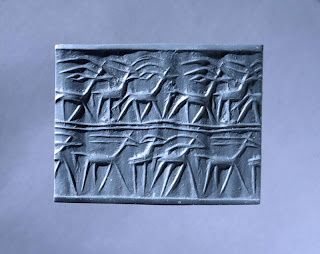 A lot of the information about Indian sculptures has already been explained in class. The appearence stays pretty much the same with the elongated eyes, long fingers, exaggerated curves, high eyebrows, clingy clothes, necklaces,bangles, the movement in the shape of the pose, and the multiple arms in Hindus work. Sculptures of India were created mostly for religious reasons. They are covering the temples for anyone to visit and worship. The Hindus and the Buddhist are the main religions that influenced the art. The materials that India used were stone;like sand stone, metal, Ivory, and wood. The sculptors usually did not sign their names and take credit for their work, but in temples of Hoysala several artist signed their names almost like competing with one another. A sculptor would normally not only carve stone but also in ivory, wood, know how to cast bronze and to paint and design buildings. Some of the statues, if you would look at them face to face they might appear that the perspective is off but that is becuase the carvings on the temples were made to be looked up at and so the sculptor did that on purpose.
A lot of the information about Indian sculptures has already been explained in class. The appearence stays pretty much the same with the elongated eyes, long fingers, exaggerated curves, high eyebrows, clingy clothes, necklaces,bangles, the movement in the shape of the pose, and the multiple arms in Hindus work. Sculptures of India were created mostly for religious reasons. They are covering the temples for anyone to visit and worship. The Hindus and the Buddhist are the main religions that influenced the art. The materials that India used were stone;like sand stone, metal, Ivory, and wood. The sculptors usually did not sign their names and take credit for their work, but in temples of Hoysala several artist signed their names almost like competing with one another. A sculptor would normally not only carve stone but also in ivory, wood, know how to cast bronze and to paint and design buildings. Some of the statues, if you would look at them face to face they might appear that the perspective is off but that is becuase the carvings on the temples were made to be looked up at and so the sculptor did that on purpose.
I found one video that shows a little bit of several artists working on pieces similiar to the art style we are studying.
Works Cited
Mason,Darrielle. "Images of Integration:The temples of India and their Erotic Scupltures" Sculpture Review 53.4(2004):26-35. Art Full Text(H.W. Wilson). Web 26 Sept. 2012
Pratapaditya, Pal Tindian Sculpture, Volume 2. Museum Associates. (1988).Print.












